As if invasive plants and unpredictable weather aren’t terrible enough, gardeners also have to deal with pests, and no gardener wants these bothersome insects wreaking havoc on a bed full of fruiting harvest. Understanding which insects are hugely beneficial to plants or animals (the good), which are just baffling natural wonders (the strange), and which are detrimental to the plants we take care of (the bad) is necessary for controlling insects in the vegetable garden and household.
Only two percent of the approximately one million recognized insect species on the planet are dangerous to animals or plants. But what precisely are the dangerous critters lurking beneath your leaves? This article will uncover dangerous insects found on leaves, how to get rid of them, and other interesting facts.
Dangerous Critters Lurking Beneath the Leaves
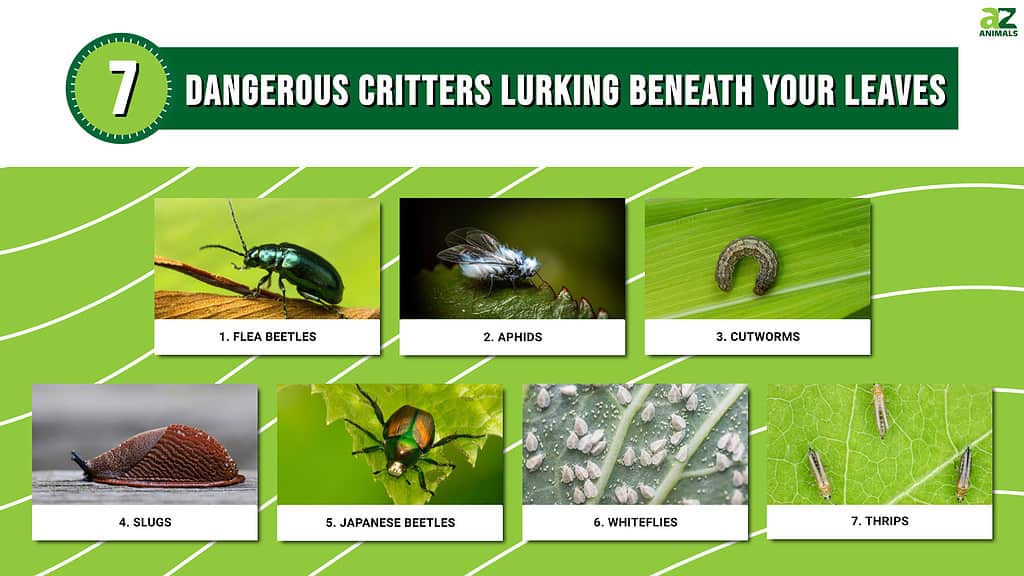
1. Flea Beetles

Flea beetles are similar in appearance to leaf beetles but smaller.
©InsectWorld/Shutterstock.com
Flea beetles are little, black, droplet-sized insects that enjoy munching on the leaves of their favorite snack, eggplant, and other greens like spinach and lettuce. They can be found all over North America, and cling to most vegetable crops. Larvae eat plant roots, while adults chow down leaves and stems, mostly harming young plants. In hot, dry weather, the numbers of this insect soar. Using insecticidal soaps, floating row covers and diatomaceous earth are examples of non-chemical control methods.
2. Aphids

Aphids produce honeydew, which inhibits plant growth.
©Alex Urs/Shutterstock.com
Aphids are extremely harmful pests. They gather in great numbers in the spring and summer to ruin your garden. They stick to leaves as they journey into vegetable gardens, suck on plant sap with their needle-like mouth, and produce honeydew, a sweet substance. This honeydew causes underdeveloped plant growth, withering, malnutrition, and death by dispersing dangerous plant-borne illnesses such as sooty mold.
These critters start their reproductive cycle’s next phase in the fall, concealed underneath the leaves to survive the winter and lay their eggs on or beneath the leaf tissues. Your gutters, leaf piles, and front yard may become overrun with these soft-bodied pests as leaves fall in large quantities. Applying pesticides vigorously throughout fall cleaning is your best bet for stopping them in the spring. Sprinkle an insecticide, insecticidal soap, or neem oil on your low-hanging bushes and trees early in the season.
3. Cutworms

Cutworms stay hidden beneath leaves or other plant residues before emerging to lay many eggs on plants.
©Maurien trabbold/Shutterstock.com
Some moth larvae are known as cutworms. They are fragmented, 1-inch-long, fatty larvae most active during the night. These critters stay hidden beneath leaves or other plant residues before emerging to lay copious amounts of eggs on plants. They consume almost everything in their track, frequently slicing through ground-level stems of developing plants.
Take out plant debris to keep these pests under control. You can use your hand to remove the insects in the late afternoon or early evening. Use carton collars or grittier materials like coffee grounds, diatomaceous earth, or eggshells to create obstacles. Additionally, make your garden a destination for birds.
4. Slugs
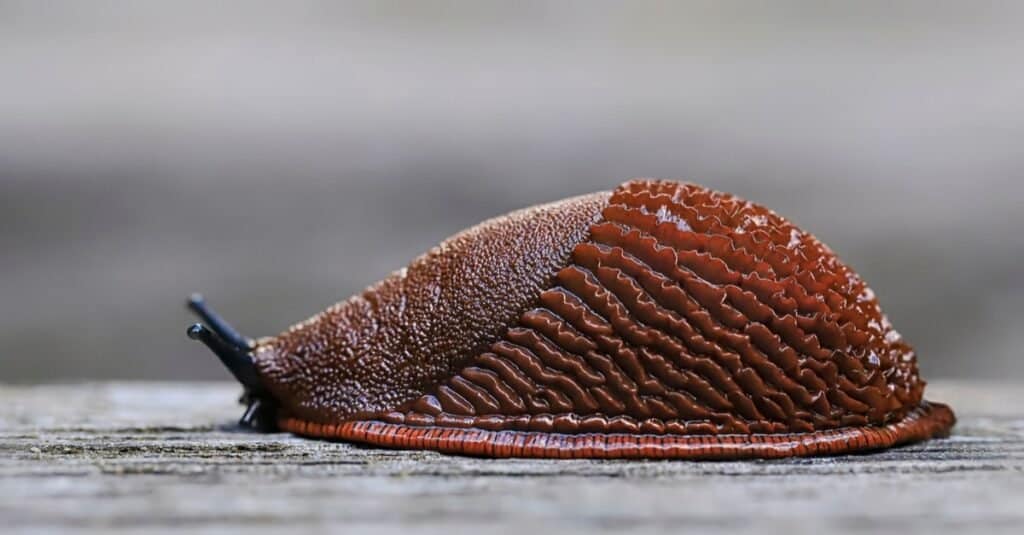
Slugs eat roots, stems, flowers, and leaves.
©Marek Mierzejewski/Shutterstock.com
Slugs, land-dwelling mollusks, can become pests in greenhouses when there’s high humidity. They are more frequent in rainy days, despite being common in humid, moist climates. Most of their feeding occurs at night when they hide in shaded areas. Slugs gnaw on roots, stems, flowers, and leaves, leaving holes in the leaves or scars on the leaf surface. Small seedlings are particularly at risk from these creatures, and the presence of slugs is indicated by silvery slime trails.
Slug control depends on sanitation. Keep the vegetable garden free of plant debris (weeds that have been pulled, leaves, etc.), bricks, stones, or old boards that can serve as slug hideouts. Additionally, you can hand-pick slugs in the morning or evening and then sprinkle salt on them. To prevent slugs from wriggling their way to the plant, you can also sprinkle wood ashes, crushed seashells, sharp sand, or diatomaceous earth (a naturally present, squishy, sedimentary rock created from fossils) all around trunks of crops.
5. Japanese Beetles
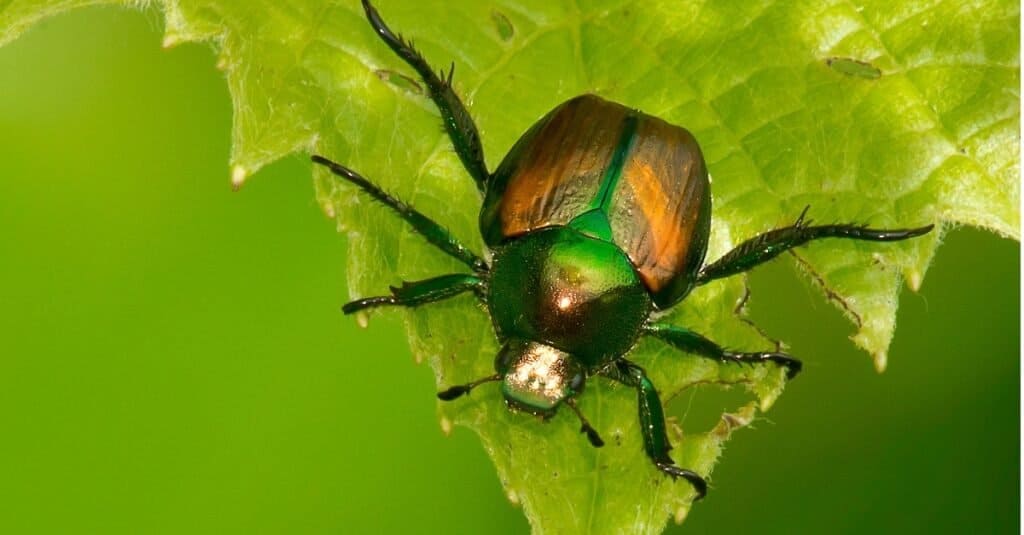
All the states on the Mississippi River’s east have Japanese beetles on a variety of fruits, flowers, and vegetables.
©PaulReevesPhotography/Shutterstock.com
Young Japanese beetles are thick, white larvae with brown heads, while the mature ones are blue-green, 1.5-inch insects with brass wing covers. All the states on the Mississippi River’s east have them on a variety of fruits, flowers, and vegetables. Since larvae eat the roots of lawn and garden crops, adults bite on leaves, eat flowers, or might entirely defoliate the garden.
Japanese beetles can be eliminated by shaking them off of plants and placing them in a jar of water and soap in the early morning when they are less active. Additionally, you can choose floating row covers or insecticidal soap spray.
6. Whiteflies
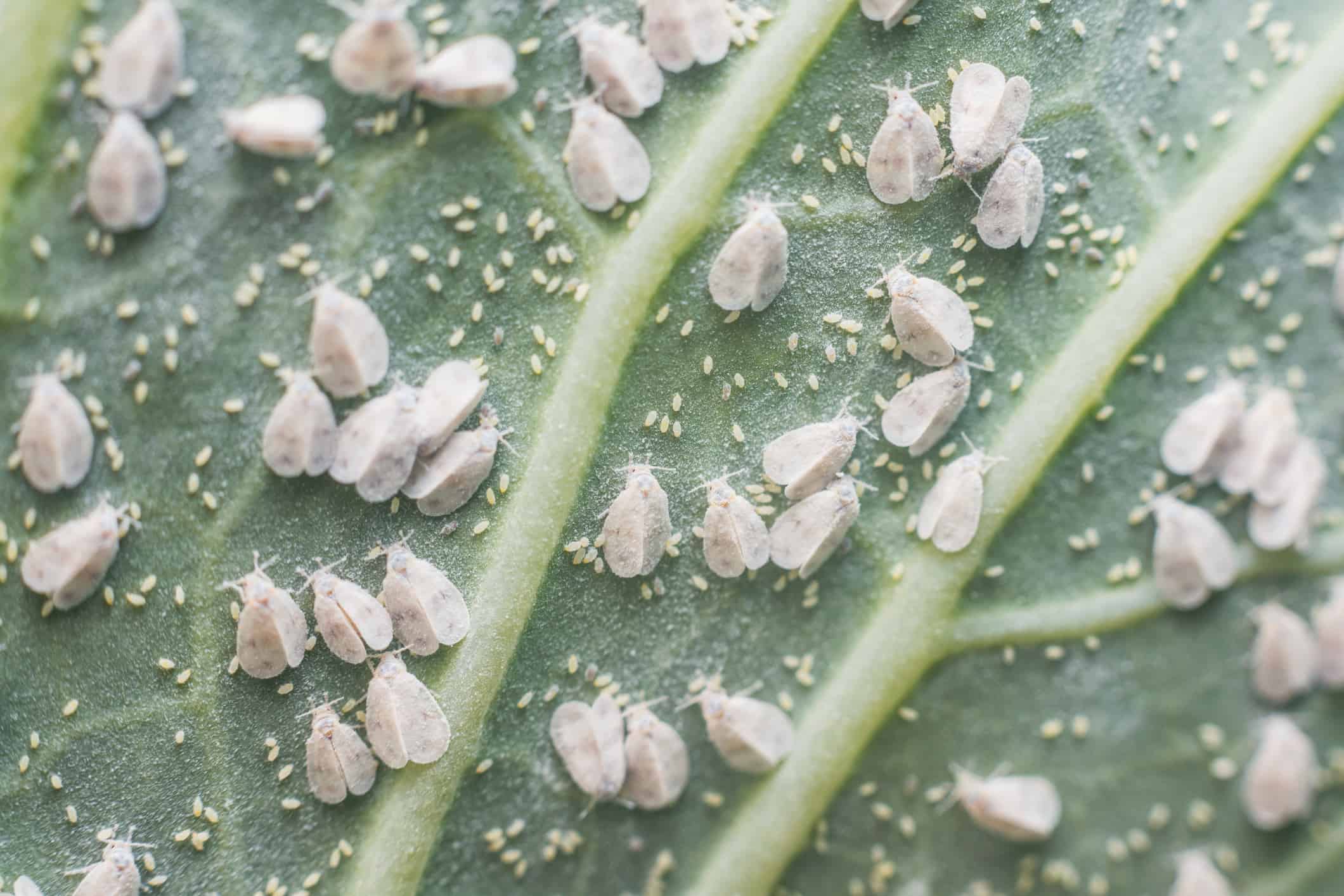
Infestations of whiteflies can result in dry or yellow leaves that may make plants crumble.
©iStock.com/Andrei310
In addition to weakening and stunting plant growth, these little sucking bugs also abandon sticky honeydew that causes fungal growth on leaves. These tiny insects — about 1/12 inch long — flutter from the underparts of the leaves. On the underside of the leaves, whiteflies in all phases may be present. Sizable infestations can result in dry or yellow leaves that may make plants crumble, whereas small numbers are generally harmless. The sweet material produced by whiteflies draws ants and sooty mold, just like other sap-sucking pests.
Whiteflies can be eliminated by hose-blasting plants, followed by applying insecticidal soap to the tops and bottom parts of leaves. When it’s cooler outside, do this in the morning or late in the evening.
7. Thrips
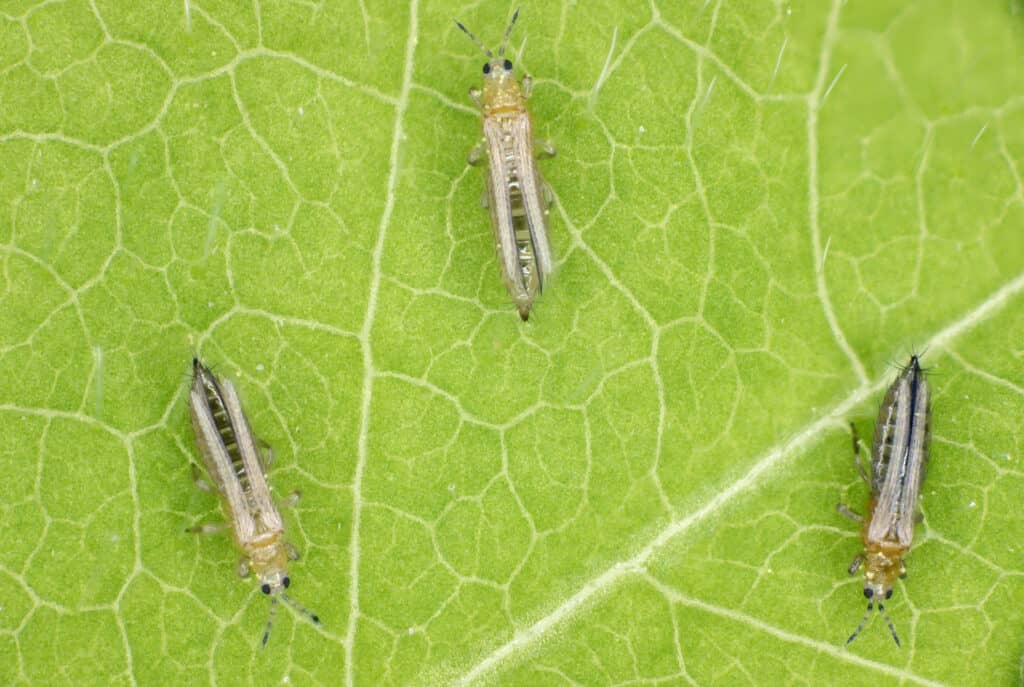
Thrips feed on plants and fungi and alter the color and shape of plants.
©iStock.com/Tomasz Klejdysz
Thrips are minuscule, fringe-winged insects. These sap-sucking pests alter the color and shape of almost any kind of plant. They frequently produce white blotches on petals and leaves and tiny black poo smudges on the leaves. Thrips are challenging to get rid of and frequently need a systematic approach, including sticky traps and neem oil or insecticidal soap.
Summary of 7 Dangerous Critters Lurking Beneath Your Leaves
Here’s a recap of seven critters living beneath leaves and causing damage to gardens and yards.
| Number | Animal | Damage Caused |
|---|---|---|
| 1 | Flea Beetles | Larvae eat plant roots of vegetables; adults eat leaves and stems of young plants |
| 2 | Aphids | Produce honeydew, which causes underdeveloped plant growth, malnutrition, and death by dispersing plant-borne illnesses such as sooty mold |
| 3 | Cutworms | Consume almost everything in their paths, including ground-level stems of developing plants |
| 4 | Slugs | Gnaw on roots, stems, flowers, and leaves, leaving holes in leaves or scars |
| 5 | Japanese Beetles | Larvae eat roots of garden crops; adults bite leaves, eat flowers, or defoliate the garden |
| 6 | Whiteflies | Infestations can result in dry or yellow leaves that may make plants crumble |
| 7 | Thrips | Alter color and shape of plants; often produce white blotches on petals and leaves and tiny black poo smudges on the leaves |
The photo featured at the top of this post is © MMCez/Shutterstock.com
Sources
- Mike Hogan / Accessed November 28, 2022
- Luke Miller / Accessed November 28, 2022
- The Editors / Accessed November 28, 2022
- Ric Bessin, Lee H. Townsend, Extension Entomologists & Robert G. Anderson, Extension Horticulturist University of Kentucky College of Agriculture / Accessed November 28, 2022
- Jessica Walliser / Accessed November 28, 2022
Thank you for reading! Have some feedback for us? Contact the AZ Animals editorial team.







